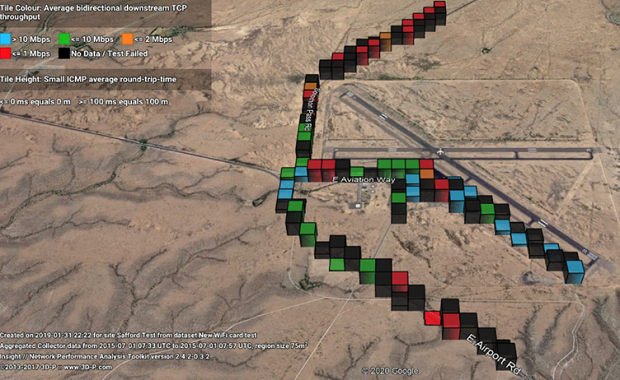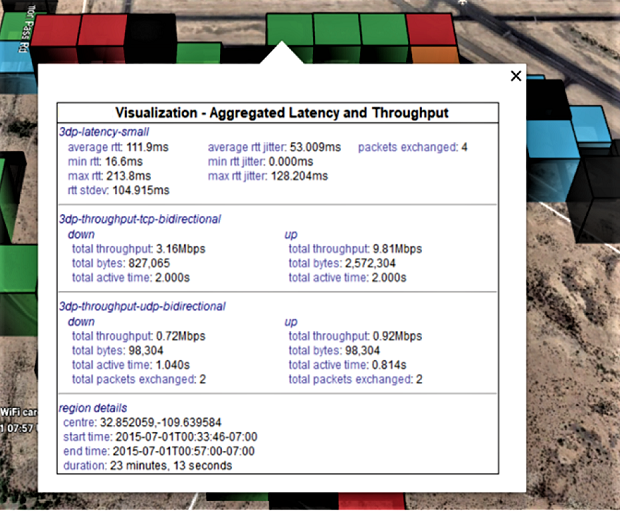3D-P Evtech Solutions Ltd
The Intelligent End Point – It’s not just a bullet proof radio
Let’s face it, 3D-P’s Intelligent End Points (IEPs) are as rugged as all get out. Hopefully, you will have seen them in action on YouTube as we shoot them, drop them out of planes, throw them in a lake and blow them up with a civil war canon.
But their rugged quality and the options available with regards to radio technology are not at the core of the value of the little beastie. There is a significant range of tools that we’ve developed that reside on the IEP to support our customers and solve some of their problems.
We will explore three applications that we’ve developed and that operate on our IEPs. These applications demonstrate markedly different problems, and the subsequent solutions, we were able to achieve with the IEP.
First Application – PubSub – (The Network Decongestant)
To set the scene; most miners use High Precision GPS corrections to get millimeter accuracy for digging and drilling out in the pit. This process consists of a base station located at a surveyed spot, that measures the difference between its precisely known location and where the constellation of GPS satellites says it is. That difference generates corrections data that is then sent out across the wireless network to the vehicles that require it.
Traditionally this corrections data is sent as broadcast data, which means it is sent to every single part of the network. On highly utilized and large networks this can create problems of data congestion. We’ve seen it, and our customers have asked us to solve it.
To solve this issue, we created an application called Publish Subscribe, or PubSub for short. Firstly, an IEP is used to convert the broadcast corrections data to unicast data. The IEP maintains a record of all fleet that require the corrections data and just sends it to them. As fleet are for periods of time this can also cause an issue as the unicasts will be sent to devices that are no longer available, and this creates ARPs. ARPs add more unwanted traffic to the network.
To finally put a nail in the solution we get our IEPs installed on those fleet devices that require HPGPS correction to subscribe to the unicast server IEP so that it can automatically update its table of the available fleet.
The result is an automated system that minimizes the data that needs to traverse the network.
Second Application – Geofencing and Storward – (The Dynamic Duo)
Quite often we will see miners using different mining applications from different OEMs. A mine operating Caterpillar’s Minestar for FMS production might also use Honeywell’s MEM for asset health management and analysis. An IEP can provide ethernet connectivity to onboard Minestar devices while hosting Honeywell’s MEM on its internal datalogger and computing system. The IEP also provides the tools and interface to the vehicle system (VIMS, VHMS, etc.) so that the MEM application can capture data from the vehicle.
If there are network constraints (high numbers of vehicles and high throughput requirements) in highly active FMS areas such as the pit, the IEP can be configured to only transmit asset health (non-critical in real-time) data when the connection to the supporting network is available outside of the pit.
To accomplish this, we use the IEPs own GPS which can be configured with specific tools that allow geofencing. Once the vehicle is in a defined geofenced area designated as ‘safe to transmit’ our Storward application will recognize the ability to transmit the data it has stored previously and will send the required data over the network.
Our Dynamic Duo of Geofencing and Storward offers a smart way of protecting the performance of the network in critical mining areas by managing when and where data is sent.
Third Application – NPAT – (The Investigator)
As an owner/operator of a mine wireless network, you might find yourself in a situation where the applications being used over the network are performing badly. Where to turn? Quite often the application provider will blame the network and the network designer/implementer will point out application issues. That’s a no-win situation for our miner.
To solve this, and a range of other problems including lack of capably trained technical resources on-site, we developed Network Performance Analysis Tools (.
NPAT’s ‘collectors’ reside on the IEP and can capture test metrics from the edge or vehicle side of the network. Tests such as throughput, latency, and jitter can be run, and data logged onboard the IEP. Now, where things get smart is in how the tests are performed and presented. We can configure the tests to demonstrate whether the network is exceeding, meeting, or failing the application requirements – that is the minimum needs the application has to operate over the wireless network.
We can then demonstrate this graphically, through visualization as seen below at our test facility in Arizona.

To make things more exciting we can drill down further into the visualization and have a look at the supporting test data.

And…the icing on the cake…our collectors are specific to the network technology. We can collect the standard test data supported by specific information related to 802.11n Wi-Fi, Rajant’s InstaMesh technology, and LTE.
Collecting specific information and contextual data can help identify underlying network causes of poor performance by first comparing the performance of the network to the applications operating over it to make sure it can support those applications. If the network isn’t doing well, we can bury our noses into the contextual data to determine where the problem could be coming from.
As a result, our miners can not only determine if they are suffering from a network performance issue or a poorly performing application, but they also have a raft of information to help in understanding the cause.
But I can build that myself…NOT
All these applications reside on our IEP, but what is stopping you from just going and building it all yourself. Sure, you can, but there’s a cost.
Cobbling together a bunch of different devices and products to obtain an outcome will come at the cost of supportability and maintainability. You’ll need people that understand enough about all the devices and products and can access support (if available) through the different manufacturers, to keep it going when things like firmware upgrades change interface requirements and as we all know, troubleshooting is more difficult than ever before.
Besides, you’ve now got a cabin full of multiple active devices, cables, power supplies, etc. that are just pleading to fail, and for some poor technician to come out, stop the truck and fault find for a few hours at the cost of stopped production.
Source: https://3d-p.com/the-intelligent-end-point-its-not-just-a-bullet-proof-radio/

|
Technical Lead
The Technical Lead manages the installation of wireless network infrastructure and 3D-P proprietary Intelligent End Point solutions and third-party communication devices, and provides onsite and occasionally remote support to our existing customer base using internal best practices and business knowledge as required.
Technical Solution Advisor
3D-P’s Technical Solutions Advisor is responsible for accelerating revenue growth within the assigned region or within specific accounts, by developing, maintaining and effectively managing those customer accounts.